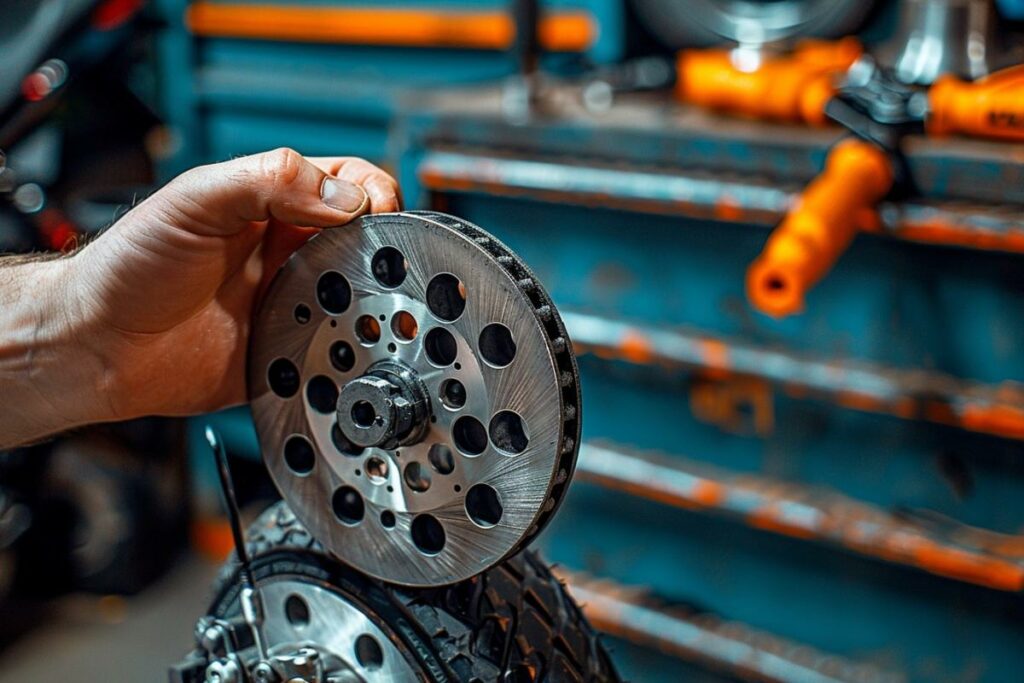How to Check and Change Scooter Brake Pads Yourself

“`html
Replacing your scooter’s brake pads might seem intimidating at first. However, with a little patience and the right advice, it’s a task that’s quite accessible, even for those of us who aren’t mechanical wizards. If you’re handy and enjoy getting your hands dirty, this guide is perfect for you.
When Should You Replace Your Brake Pads?
You’ve probably heard this before, but it bears repeating: effective braking is crucial for your safety. So, how can you tell if your brake pads need replacing? There are several telltale signs. Firstly, if you notice that the thickness of the pad material is less than 1.5 mm, it’s time to replace them. Moreover, be attentive to symptoms like weaker braking power, a metallic scraping sound when braking, a spongy brake lever, or a drop in brake fluid level. All these indicators signal the need for new pads.
Personally, the first time I faced this on my scooter, I noticed an alarming metallic noise during braking. That was my first clue, and after checking, the thin pads confirmed my suspicion. They were ready for a replacement.
Selecting the Right Brake Pads
Choosing the right brake pads is crucial. Depending on your scooter model, riding style, and budget, recommendations can vary significantly. Don’t hesitate to consult a specialist to avoid mistakes. They can guide you towards the best option for your ride. Personally, I’ve always preferred to seek advice from my trusted mechanic. Knowing my scooter and riding habits allows him to recommend the most suitable pads.
How to Replace Your Brake Pads?
The process of changing brake pads may seem complex, but breaking it down into steps makes it clearer. Before you start, ensure you have the necessary tools within reach. You’ll need specific tools like wrenches to remove the rear wheel, caliper, and worn pads.
Follow these steps:
- Disassembly: Begin by removing the exhaust silencer, shock absorber, swing arm, and rear wheel. Often, these parts are fastened with screws that need to be unscrewed.
- Accessing the Pads: Unscrew the caliper half to access the worn pads. Remove them and push back the pistons to make room for new pads. Be careful not to activate the brakes when the pads are removed.
- Installing New Pads: New pads come in two parts. Install the first one, then the second, ensuring they are aligned with the caliper before tightening the screws.
I still remember the first time I swapped out the pads on my scooter. I was a bit nervous, worried about making mistakes that could jeopardize my safety. But by following the steps methodically, everything went well. The sense of satisfaction afterward was immense!
Reassembly and Final Checks
Once the new pads are in place, it’s time to reinstall the caliper, rear wheel, and all other components in their original positions. Don’t forget to securely tighten all screws to ensure overall safety.
| Step | Action |
|---|---|
| 1 | Reattach the caliper and tighten the support screw |
| 2 | Position the rear wheel and securely tighten the screws |
| 3 | Screw the swing arm and ensure the safety pin |
| 4 | Reinstall the shock absorber and exhaust |
Before hitting the road, it’s vital to conduct some checks. Pump the brakes several times to ensure good contact between the pads and discs, and double-check the brake fluid level. Remember, new pads need to be bedded in: avoid harsh braking for the first 50 miles.
If you carefully follow these tips, your scooter will be ready to tackle miles safely, and you will be too. Don’t wait for the worn pad symptoms to appear to pay attention. As I’ve learned, it’s better to be proactive. And after all, learning to change your scooter’s brake pads is a great way to bond with your machine and better understand its workings. Happy riding!
“`





